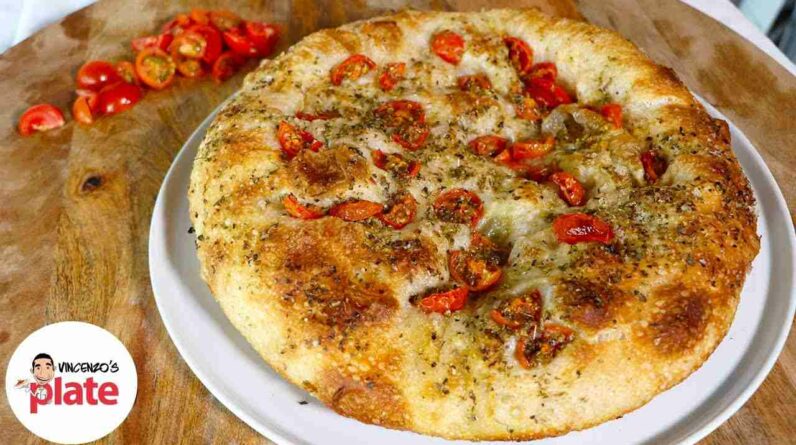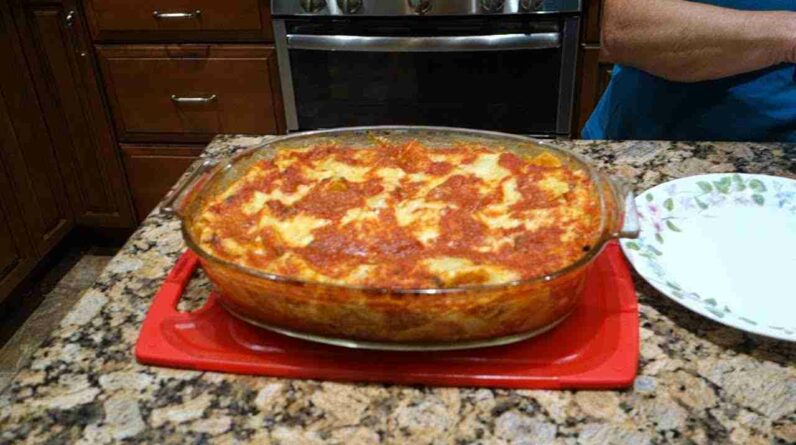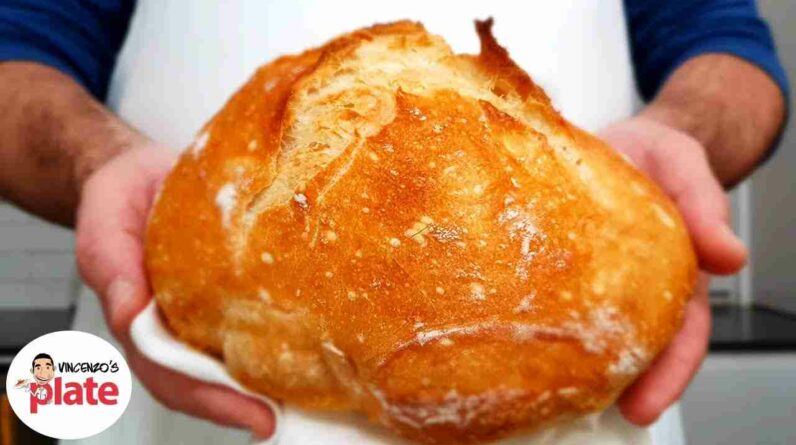Ah, Italian cheese, the crowning glory of so many dishes, the stuff of dreams for gourmands everywhere! When we embark on a gustatory journey through Italy’s cheeses, we’re not just exploring a product; we’re diving salivating-mouth-first into centuries of tradition and an artistry so divine, it could make a grown man weep over a cheese wheel. So let’s skip the pleasantries and dig right into the cheeseboard of Italia!
The second you even whisper the word cheese within the vicinity of an Italian kitchen, images of melty, stretchy, creamy goodness start to dance like sugarplums in one’s head. Italian cheeses vary from region to region, and they come in all shapes, textures, and flavors – sultry Sardinian Pecorino, truffle-infused cheeses, or the famed buffalo’s milk treasures.
Let’s start with history—it’s thick and rich, just like the cheese fonduta you could be dreaming of. Italian cheese dates way, way back—like, Old Testament back. Seriously, cheese making was even a thing in Ancient Rome, and they were mad good at it too! This is a culinary tradition that has been honed over millennia. The kicker? Many of these cheeses are still made as they were ages ago, with the same simple ingredients: milk, salt, rennet, and a little cheese magic (which, disclaimer, is not an actual ingredient, but we swear it’s a thing).
Moving on from the history lesson, let’s talk uses and pairings. You can’t swing a bunch of grapes in Italy without smacking into a dish that doesn’t celebrate cheese. From slathering creamy ricotta on bruschetta, grating mountains of Parmigiano on your pasta, to layering fresh mozzarella atop your pizza—the Italians have this pairing game down to an art form. And, for the cheese purists out there, a simple ‘formaggio’ plate with figs, honey, and a glass of bold Chianti will transport your taste buds to cheese heaven.
But remember, while our mouths are enjoying a little piece of Italy, it’s not just about the taste. There are important cultural norms to consider. For instance, it’s considered almost a culinary sin to indiscriminately put cheese on seafood pastas or risottos in Italy. They take their cheese seriously, pairing meticulously, ensuring each flavor enhances, not overwhelms the other.
Let’s not forget about the myriad festivals dedicated to these prized wheels of happiness. Towns throughout Italy celebrate their cheesy heritage with feasts, fairs, and even battles where the combatants wield cheese—now that’s amore!
With that, embark on your Italian cheese love affair with gusto! Try them in their regional homes, at markets, in restaurants, or even in the comfort of your own kitchen. Just be ready to fall head over heels for formaggio. Stay with me as we untangle the cheese strings of story and indulge in the delectable tales of Mozzarella, Parmigiano-Reggiano, Ricotta, and Gorgonzola—they’re all stars in their own right, and they’ve each got a taste-tastic story to tell.
Mozzarella: The perennial favorite
Now, let’s chat about Mozzarella, the cheese that’s stolen hearts worldwide with its milky, melt-worthy qualities. Picture this: you’re sitting in a sunny piazza, and before you is a plate of perfectly smooth, shiny Mozzarella di Bufala—yes, my food-loving friend, this is where you sigh with contentment.
This seductive cheese hails from southern Italy, with the Campania region often lauded for producing the crème de la crème of mozzarella, especially around Naples. It’s traditionally made from the rich milk of water buffaloes (not your average farm cow) and comes in several delicious forms—from the small, snackable bocconcini to the larger, salad-worthy balls. Fresh Mozzarella oozes with quality, quite literally, when cut open.
But darling, Mozzarella is not just about that caprese salad, as iconic as it might be with its ripe tomatoes, fresh basil, a drizzle of balsamic, and a sprinkle of salt. Think of Mozzarella as your culinary BFF—infinitely adaptable. Slide that bad boy into your panini for a lunch with a touch of Italian luxury, or tuck velvety slices between layers of eggplant for an eggplant Parmigiana that’ll have you talking with your hands like a true Italian!
And how can we forget the pizza? Mozzarella is the Marilyn Monroe of the pizza world; without it, pizza just doesn’t sing the same! The way it bubbles and browns in the oven is like a performance in itself. Treat yourself to a pizza Margherita in Naples, where they honor the craft with D.O.P. status—this means ‘Denominazione di Origine Protetta’, or Protected Designation of Origin, for us cheese aficionados.
Here’s a tip straight from the Nonna’s kitchen: never, and I mean never, underestimate the power of room temperature Mozzarella. It allows the cheese to impart the fullest taste, so take it out of the fridge and let it warm up a bit before digging in—your taste buds will thank you.
When pairing Mozzarella, light, crisp white wines or even a fruity rosé are your go-to companions that complement its delicate flavor without overpowering it. Imagine sipping on a chilled glass of Pinot Grigio with a forkful of that soft, white gold—we’re talking next-level indulgence.
While cultures around the globe have embraced Mozzarella on their plates, remember this: good Mozzarella is savored as fresh as possible. In Italy, this cheese doesn’t see the inside of a fridge for too long—it’s practically a sprint from the cheese maker to the table. So don’t mess around with the aged stuff when it comes to true Mozzarella; its beauty lies in its freshness.
So, whether you’re enjoying it solo, as the star of a charcuterie board, or melted atop a pizza that’s making your heart flutter, Mozzarella is one cheese that will never go out of style. As you savor each creamy bite, take a moment to appreciate this simple delicacy that has made a profound journey from the lush fields of Italy straight to your plate.
Parmigiano-Reggiano: Aged to perfection

Enter the realm of Parmigiano-Reggiano, the granddaddy of Italian cheeses. Its story begins in the Middle Ages, and it’s been gracing tables for nearly nine centuries. Authentic Parmigiano-Reggiano hails from the Emilia-Romagna region, where it’s crafted with nothing but pure cow’s milk, sea salt, and traditional rennet. The result? A hard, granular cheese that is the very definition of umami, sending your taste buds into a tizzy with its deeply savory and nutty flavor.
What you need to know about Parmigiano-Reggiano is that it’s not just for grating over pasta. Oh no, my friend, this cheese is a showstopper in its own right. Take a shard of Parmigiano-Reggiano, let it melt on your tongue, and you’ll be hit with flavors that have been developing over 12, 24, even 36 months of aging. That’s right, this cheese isn’t rushed. It leisurely matures inside cool, humid cellars creating those tantalizing, crunchy tyrosine crystals that aficionados go nuts for.
When it comes to using Parmigiano-Reggiano in dishes, Italians have mastered the delicate balance of letting this cheese shine without smothering the other ingredients. For a match made in culinary heaven, shave it over a fresh arugula salad with a kiss of balsamic glaze, or perhaps try it with a drizzle of honey for a late-night splurge. And let’s not forget how it can transform a bowl of risotto into a creamy, dreamy pot of pure joy with just a few generous grates—it’s the kind of cooking alchemy that would make any nonna proud.
But my fellow cheese lovers, to savor Parmigiano-Reggiano in all its glory, you’ve got to pair it like a pro. A full-bodied Sangiovese or Barolo brings out the complex flavors of the cheese, making for an enchanting tango between the sip and the bite. Want to take it up another notch? Try some sparkling Lambrusco from the same region the cheese is made for a playful pop that complements the salty goodness.
It’s important to note that deference is given to foods like Parmigiano-Reggiano in Italy. This cheese is so cherished that it comes with its own certification: D.O.P. (Denominazione di Origine Protetta). It’s a guarantee that what you’re getting is the real deal, produced using strict traditional methods that have stood the test of time. No imitations, no cutting corners—just pure, top-notch cheese craftsmanship.
For a true Italian experience, you must indulge in an aged chunk of Parmigiano-Reggiano at a local market, perhaps nibbled alongside a sliver of Prosciutto di Parma. Or visit during the annual “Fiera del Parmigiano-Reggiano” festival held in various towns for a chance to see (and taste) the very best that producers have to offer.
Trust me when I say that once you’ve had a true taste of Parmigiano-Reggiano, there’s no turning back. It’s not merely a cheese; it’s a slice of Italian heritage that has been perfected over centuries, a testament to the unwavering dedication of the cheese masters, and an undeniable cornerstone of not just Italian cuisine, but of world gastronomy. So raise a forkful, and let’s give thanks for this aged-to-perfection masterpiece.
Ricotta: Creamy and versatile
And now, for a cheese that is just as at home in the heart of a decadent dessert as it is in a hearty main course: Ricotta. This proverbial chameleon of the cheese world may not have the sharp bite of a Parmigiano or the sultry melt of a Mozzarella, but it brings its own brand of creamy, luscious versatility to the table.
Originating from the word ‘recooked,’ Ricotta is made by reheating the whey left over from other cheeses. This humble beginning gives it a light, fluffy texture that Italian grandmothers lovingly spoon into lasagnas and cannoli alike. And while it’s a staple in the Italian diet today, the beauty of Ricotta is that it has been nourishing the Italian people since the Bronze Age. That’s right – Ricotta is an edible piece of history!
But don’t let its simple origins fool you; Ricotta can be the star of your dish or a subtle supporting act. Pair it with a drizzle of quality olive oil and a pinch of salt for a divine spread on crusty bread, or mix it up with some spinach for a filling that makes your ravioli sing opera. It’s also the secret ingredient that makes a classic Italian cheesecake positively ethereal in texture.
When pondering pairings, Ricotta’s delicate nature allows it to harmonize with both sweet and savory companions. A light Pinot Noir or even a bubbly Prosecco can elevate a Ricotta-infused dish to a memorable repast. For a sweeter option, consider a dab of fig jam atop Ricotta on a toasted slice of bread—an instant gourmet treat that’s easy as pie (or should I say, cheesecake).
Let’s get cultural for a moment: in Italy, Ricotta isn’t just reserved for a special occasion dish. It’s a staple, a symbol of comfort found in almost every fridge. Head to any morning market and you’ll spot locals cradling their fresh tubs of Ricotta as if they were precious jewels. That’s because, in Italy, freshness is key. This ain’t no long-life cheese; for the full experience, you want it as fresh as the Mediterranean breeze.
Take the advice of a seasoned cheese traveler: seek out fresh Ricotta at a little family-run dairy where nonnas are at the helm. There, you can taste Ricotta in its purest form—the kind that makes you pause, close your eyes, and just savor the moment. Or partake in the festivities of “La Festa della Ricotta,” where this cheese is celebrated in all its glory with feasts and fairs, particularly in the regions where sheep farming is prevalent.
Remember this—Ricotta is not about overpowering; it’s about enhancing. So let it work its quiet magic in your culinary creations, and watch as it gently elevates your dishes into the echelons of Italian gastronomy. Whether spooned fresh onto a plate or secreted away in layers of pasta, there’s no denying that Ricotta is a versatile virtuoso in the symphony of Italian cheeses.
Gorgonzola: Bold and distinctive

Speaking of characters, let’s shift our focus to the blue-veined beauty that is Gorgonzola. Bursting with a bold and distinctive presence, this cheese knows how to make an entrance and leave a lasting impression on your palate. With its roots in the northern reaches of Italy, precisely the misty, pastoral landscapes of Piedmont and Lombardy, Gorgonzola is as much a part of the local heritage as the romantic fog that envelops the region.
It’s an artful masterpiece, Gorgonzola, with a lineage that dates back to the 11th century. Legend has it that a moonstruck cheese maker, distracted by thoughts of his lover, left his curds unattended only to return and find them transformed with bluish-green veins. Today, this happy accident is replicated using specific strains of mold, creating the iconic marbling that tickles the senses both visually and gastronomically.
Yet, Gorgonzola is not just a feast for the eyes. It’s a dance of flavors, ranging from sweet and mellow in its younger, “Dolce” variety, to the sharp and spicy personality of its more mature counterpart, “Piccante.” This cheese is no shrinking violet; it demands to be recognized, whether crumbled over a pear and walnut salad or melted into a risotto that’ll have you feeling like you’re dining in a cozy trattoria in Milan.
Pairing Gorgonzola is as delightful an adventure as savoring it. Its creamy, peppery bite stands up well to the boldness of hearty red wines, like Barbaresco or Amarone. For those of you who fancy a tipple that contrasts with the cheese’s gusto, a sweet and fizzy Moscato d’Asti can play off its assertiveness, striking a perfect balance on the tongue. And let’s not overlook the joy of Gorgonzola dolloped on a slice of crusty bread, paired with a hearty stout for a warming, soul-satisfying experience.
In Italian culture, Gorgonzola occupies a revered space on the cheese platter. It’s a symbol of autumnal feasts and cozy winter gatherings. Embrace the norm and try it with ripe figs or a bit of honeycomb; it’s a simple yet sublime delight that speaks volumes about the Italian way of life, where slowing down to enjoy the melding of flavors is not just recommended; it’s practically mandatory.
If you find yourself under the spell of Gorgonzola’s piquant magic, consider attending the “Gorgonzola Festival” held in its namesake town. Revel in a community steeped in tradition, where this magnificent moldy marvel is showcased in all its glory, from creamy spreads to hearty wedges begging you to take a bite and fall in love.
Gorgonzola is more than just cheese; it’s an odyssey of taste that’s as rich in history as it is in flavor. Whether you’re indulging in a chunk alongside a glass of nectar-like dessert wine or folding it into a culinary creation that begs for a tangy kick, Gorgonzola promises an Italian cheese experience that’s bold, memorable, and utterly irresistible. So go ahead, take a walk on the robust side of Italy’s cheese culture, and let this distinctive azure-veined wonder whisk you away on an epicurean journey fit for the most adventurous of cheese lovers.










